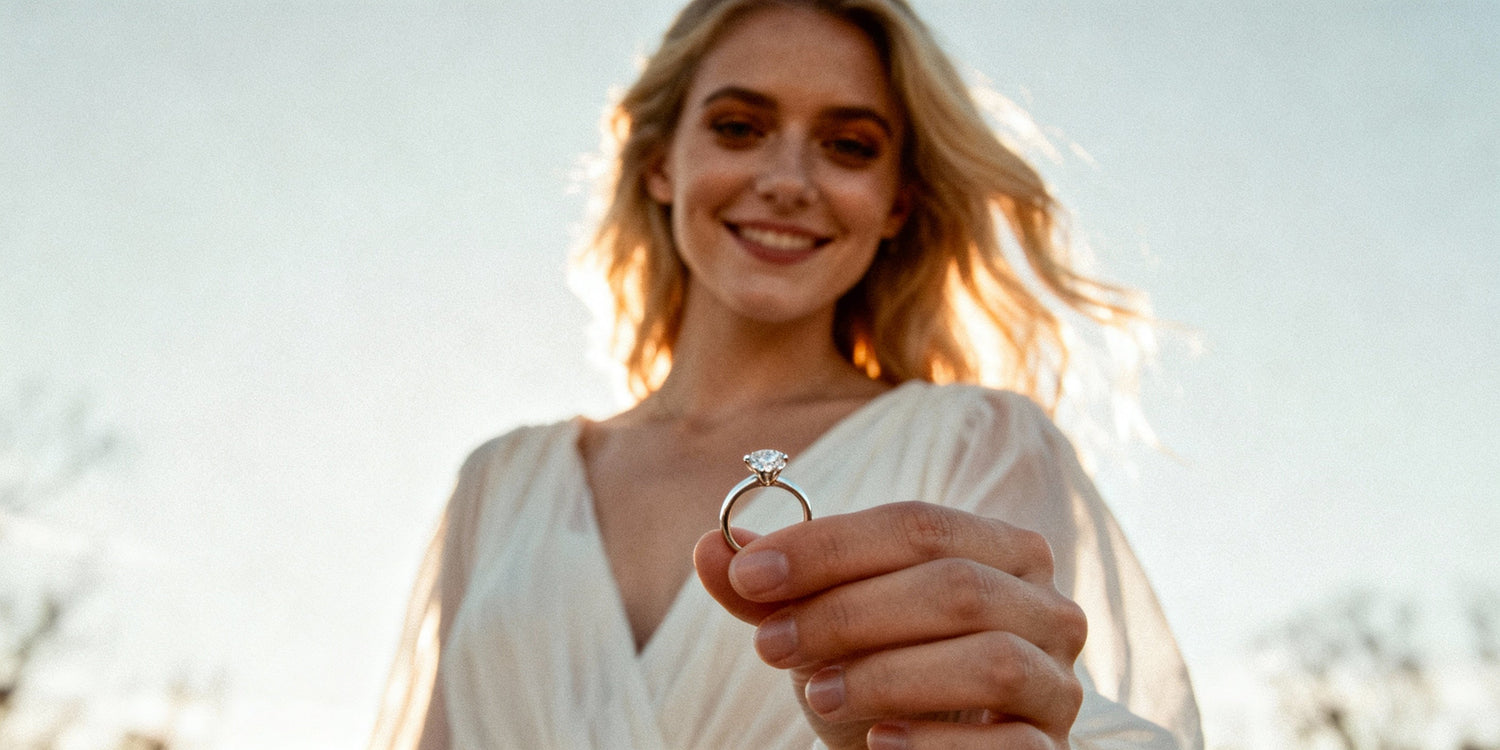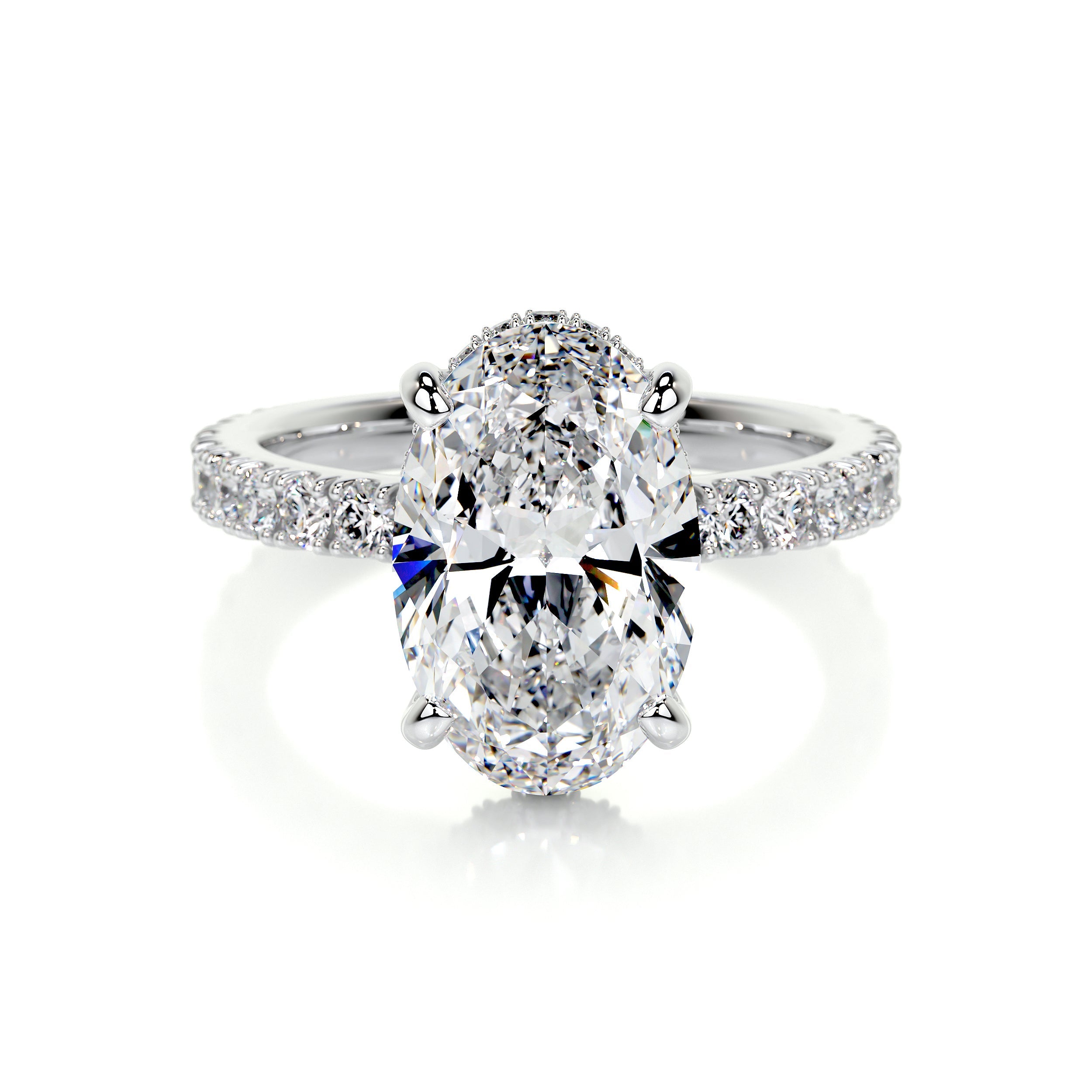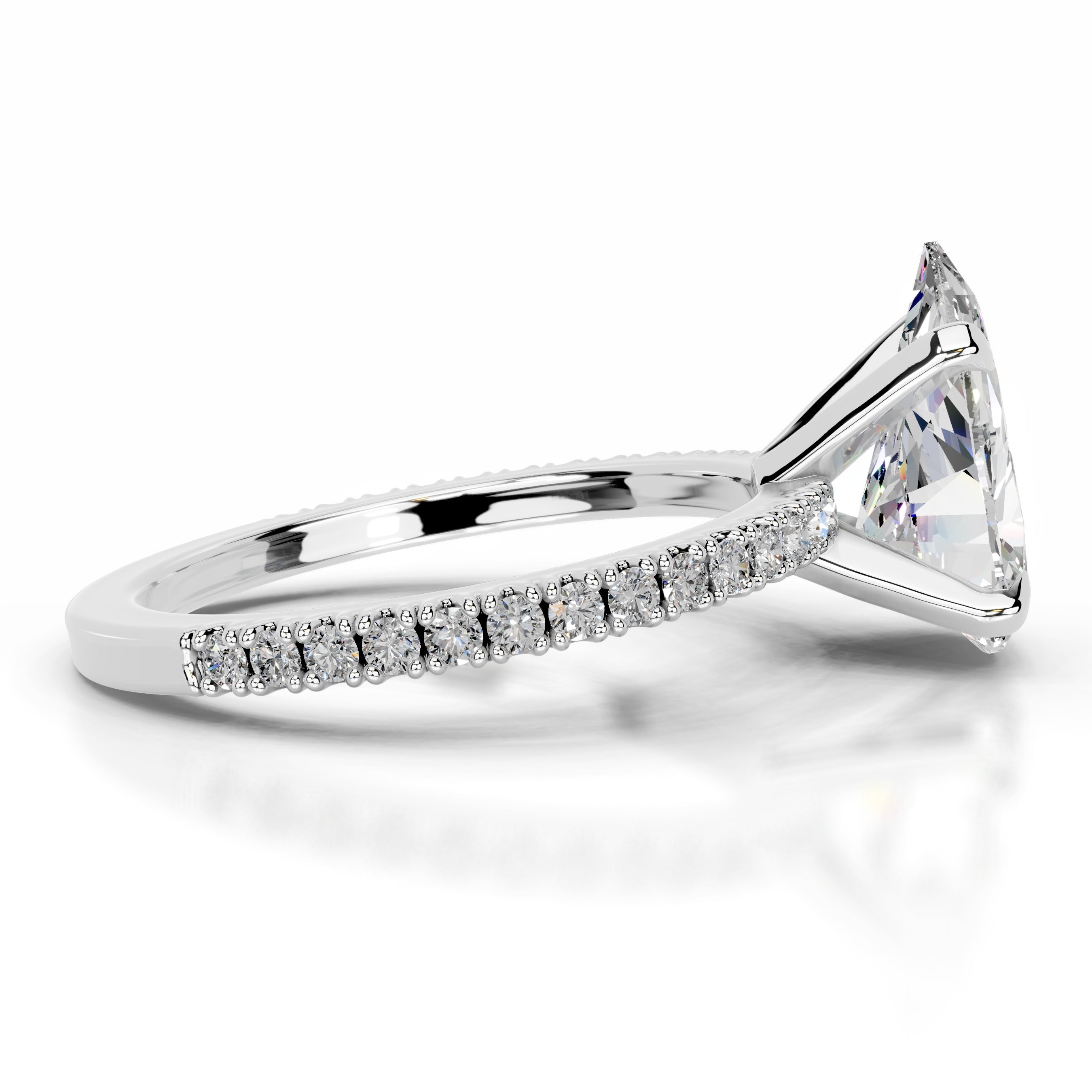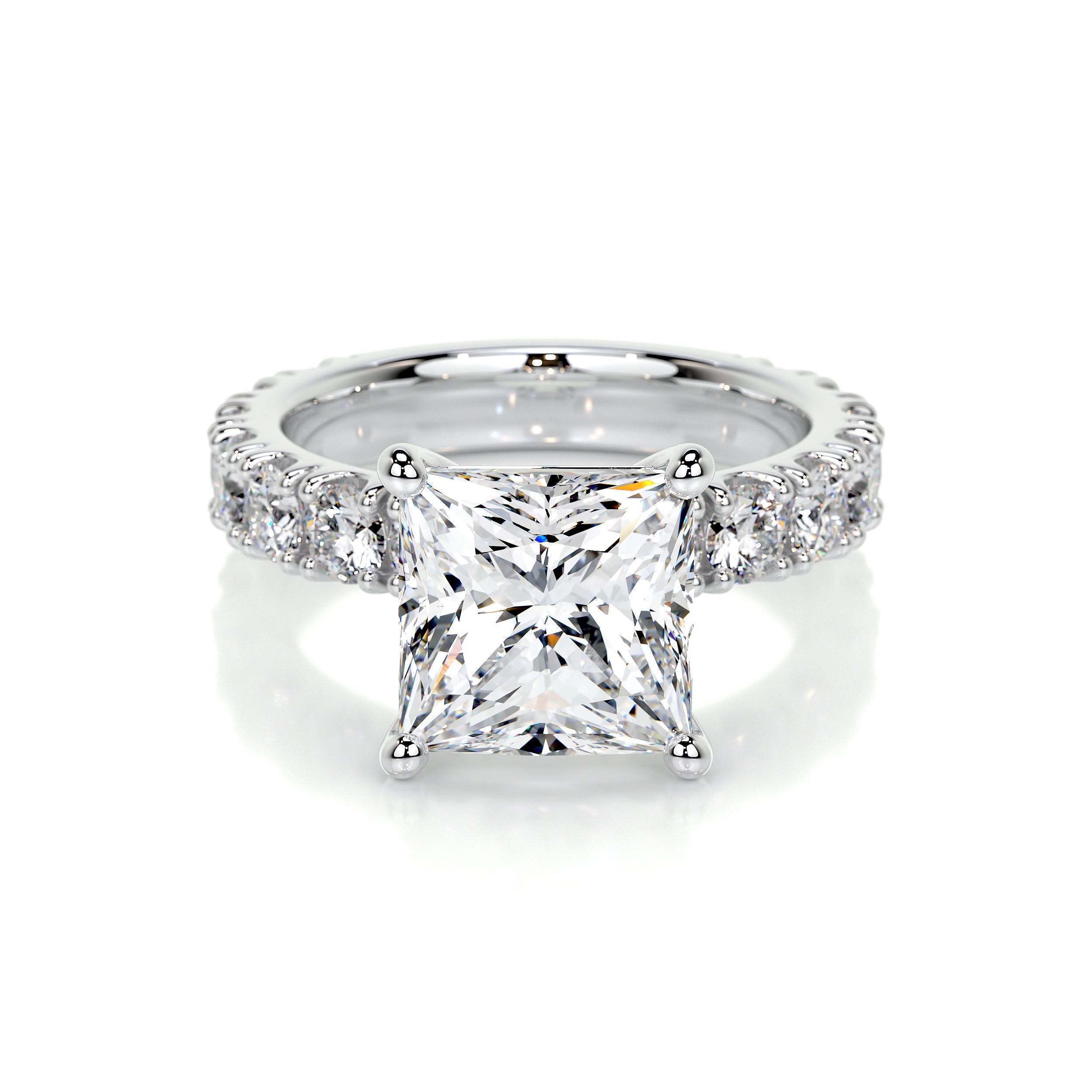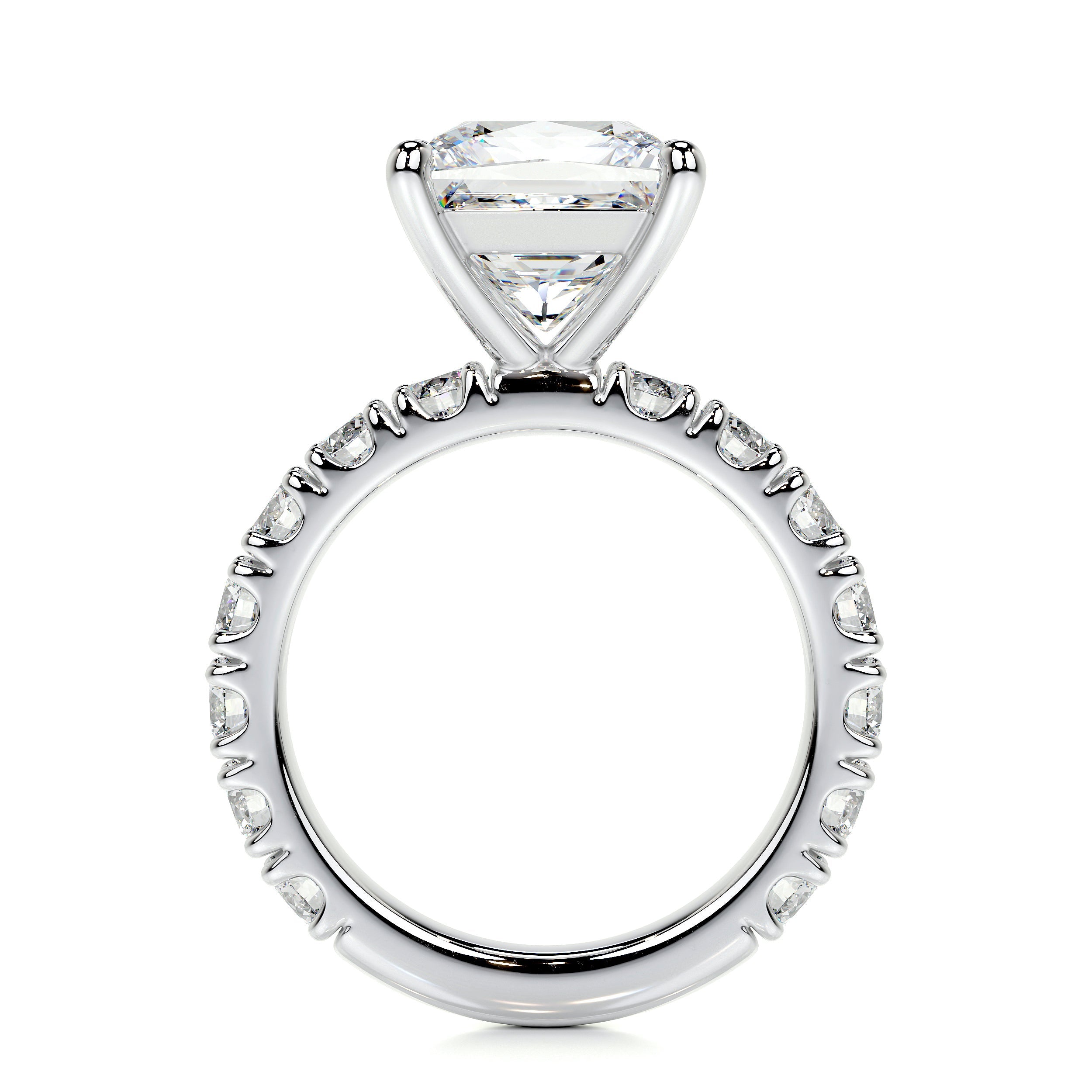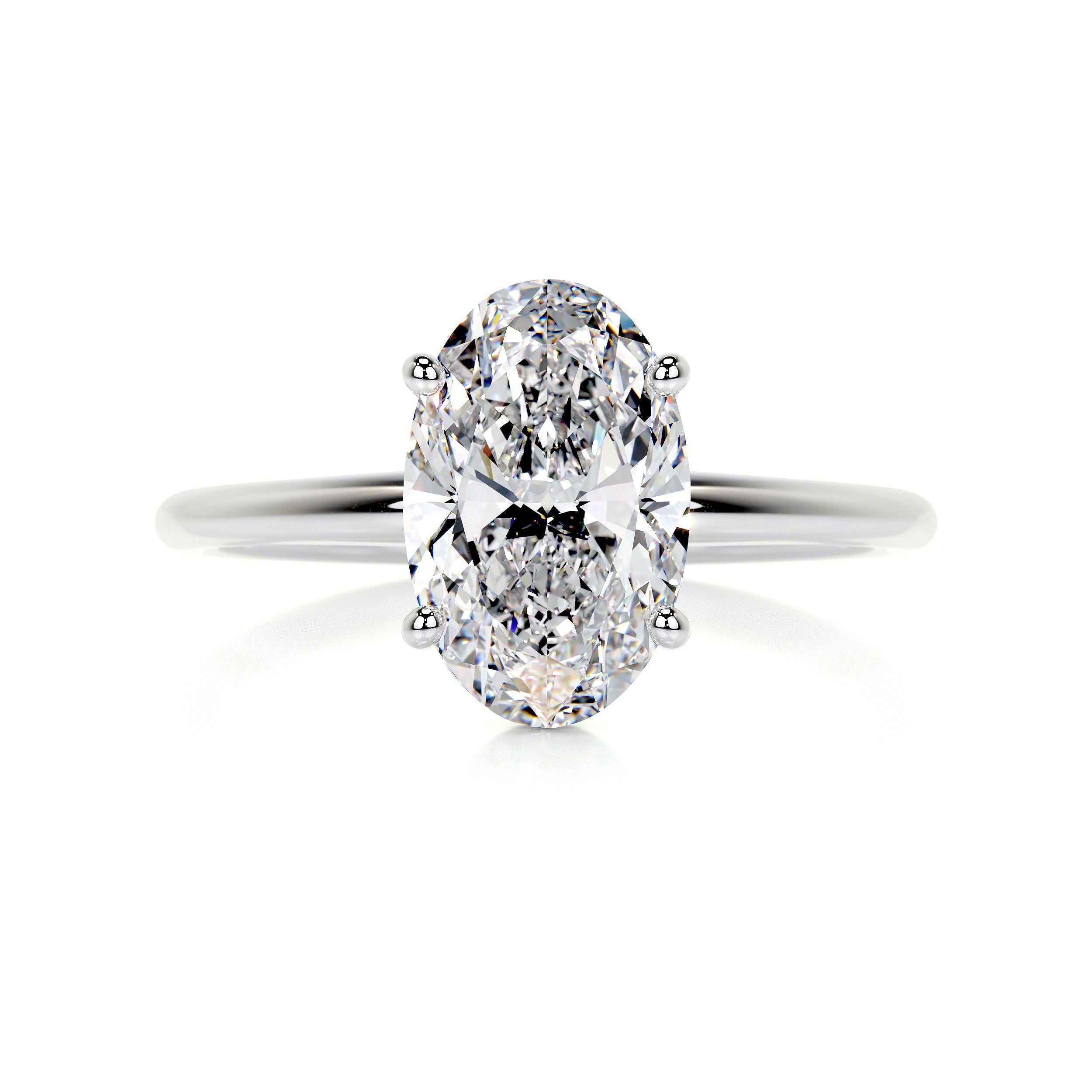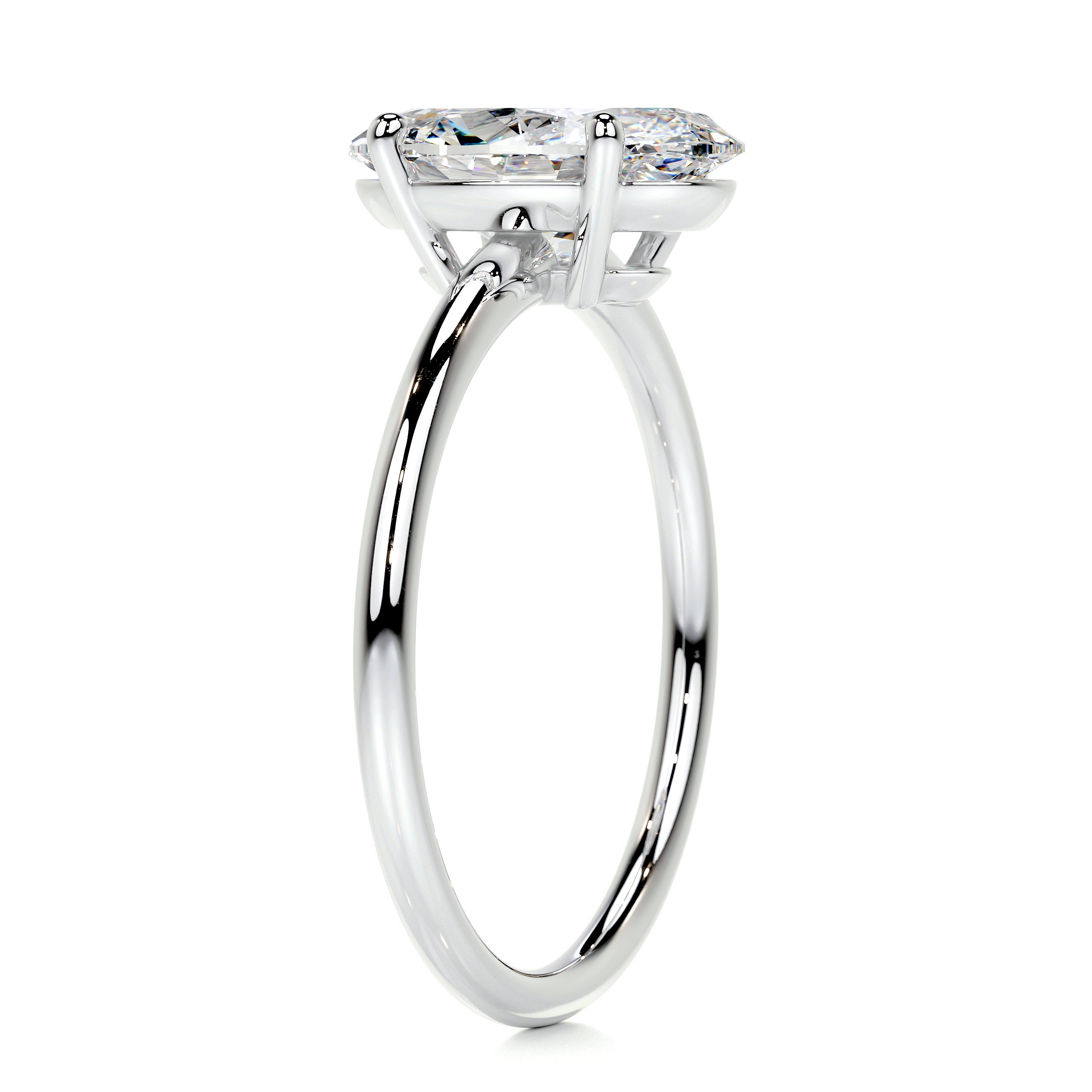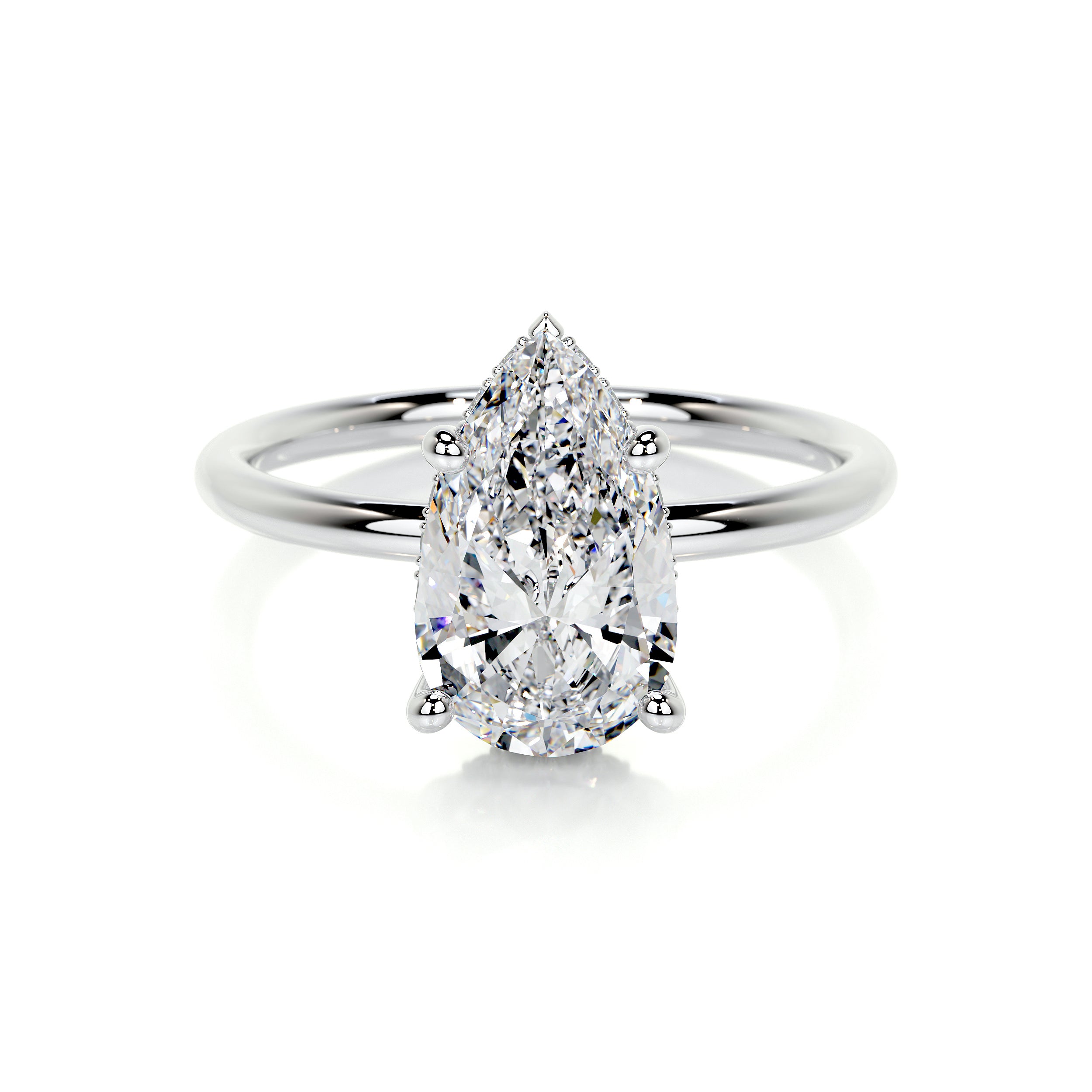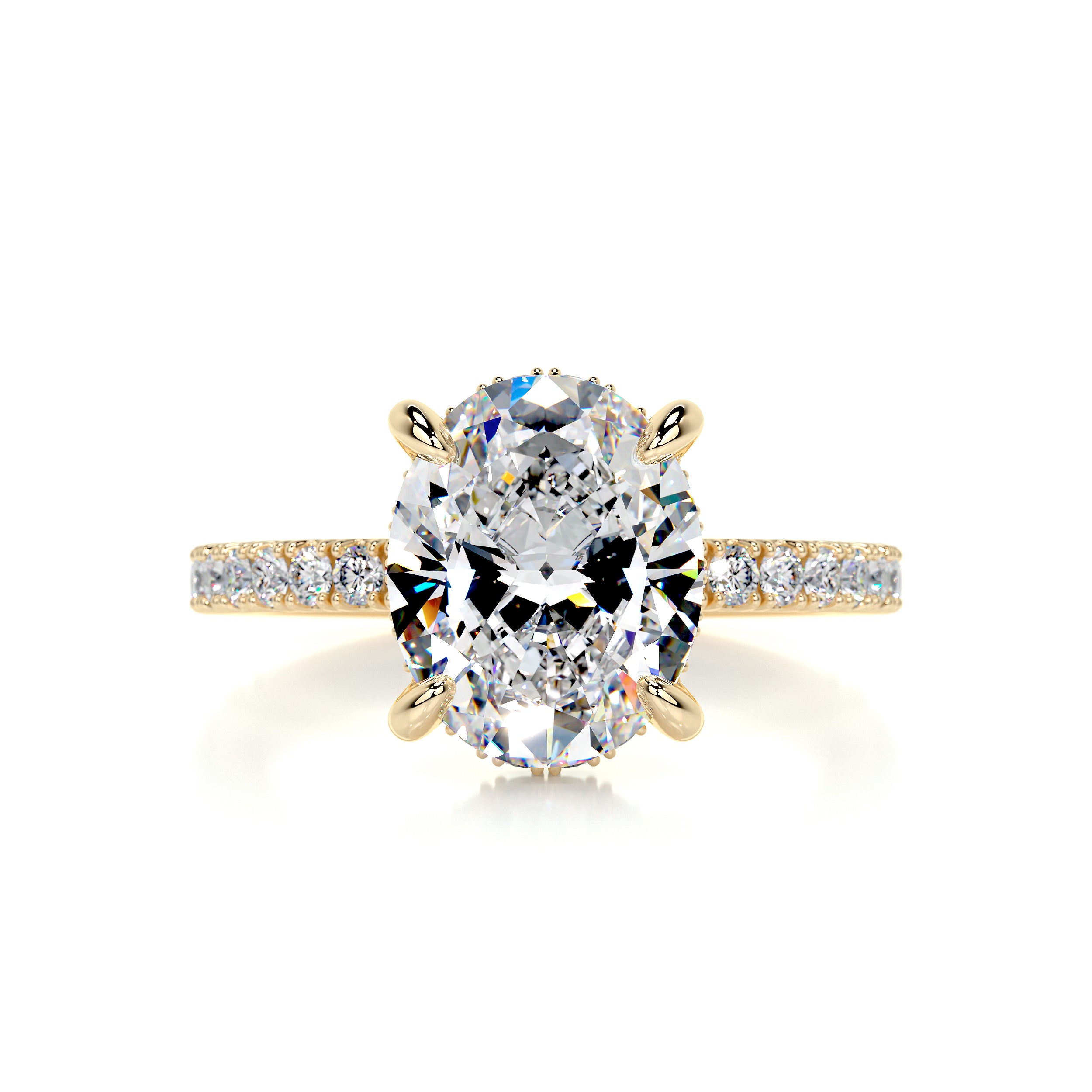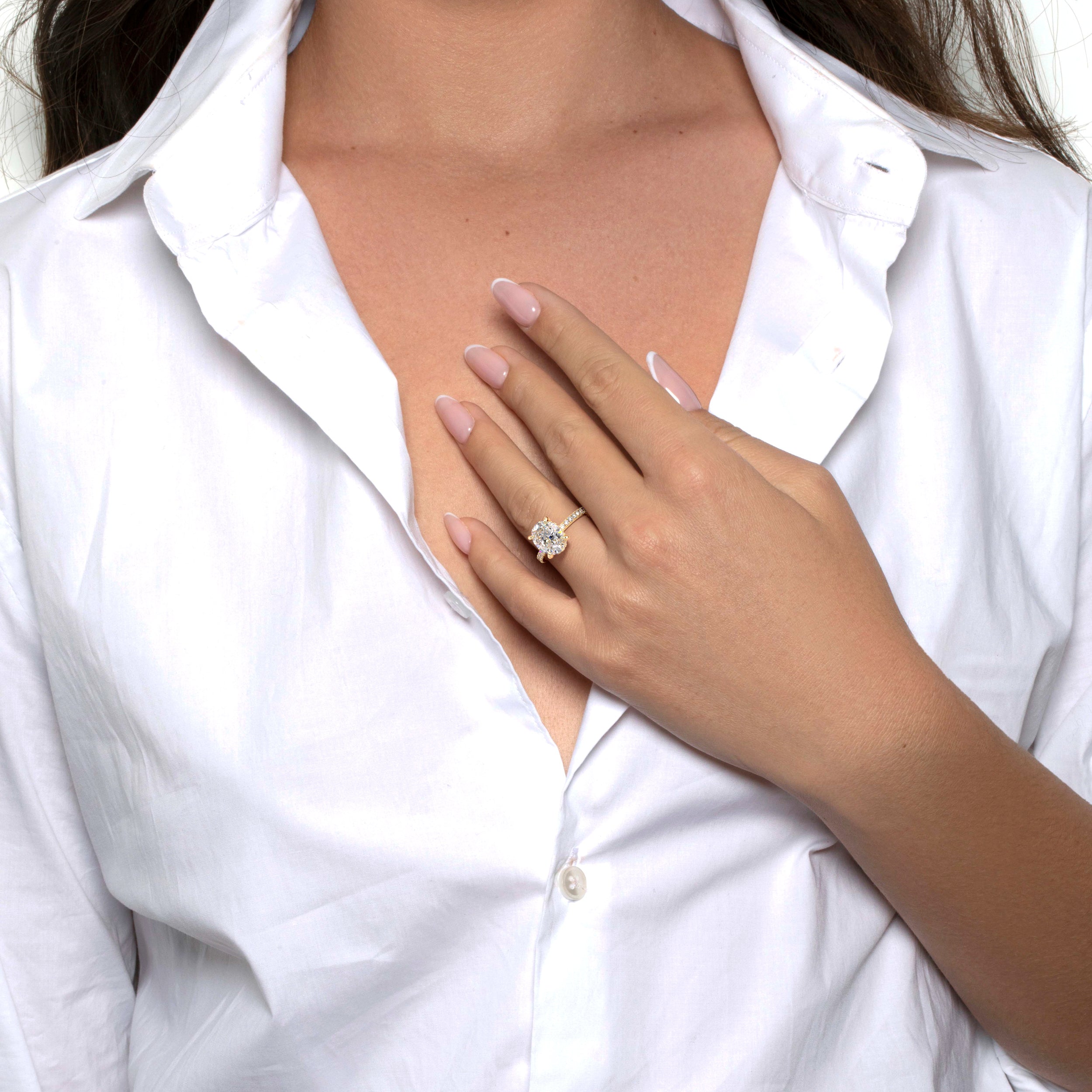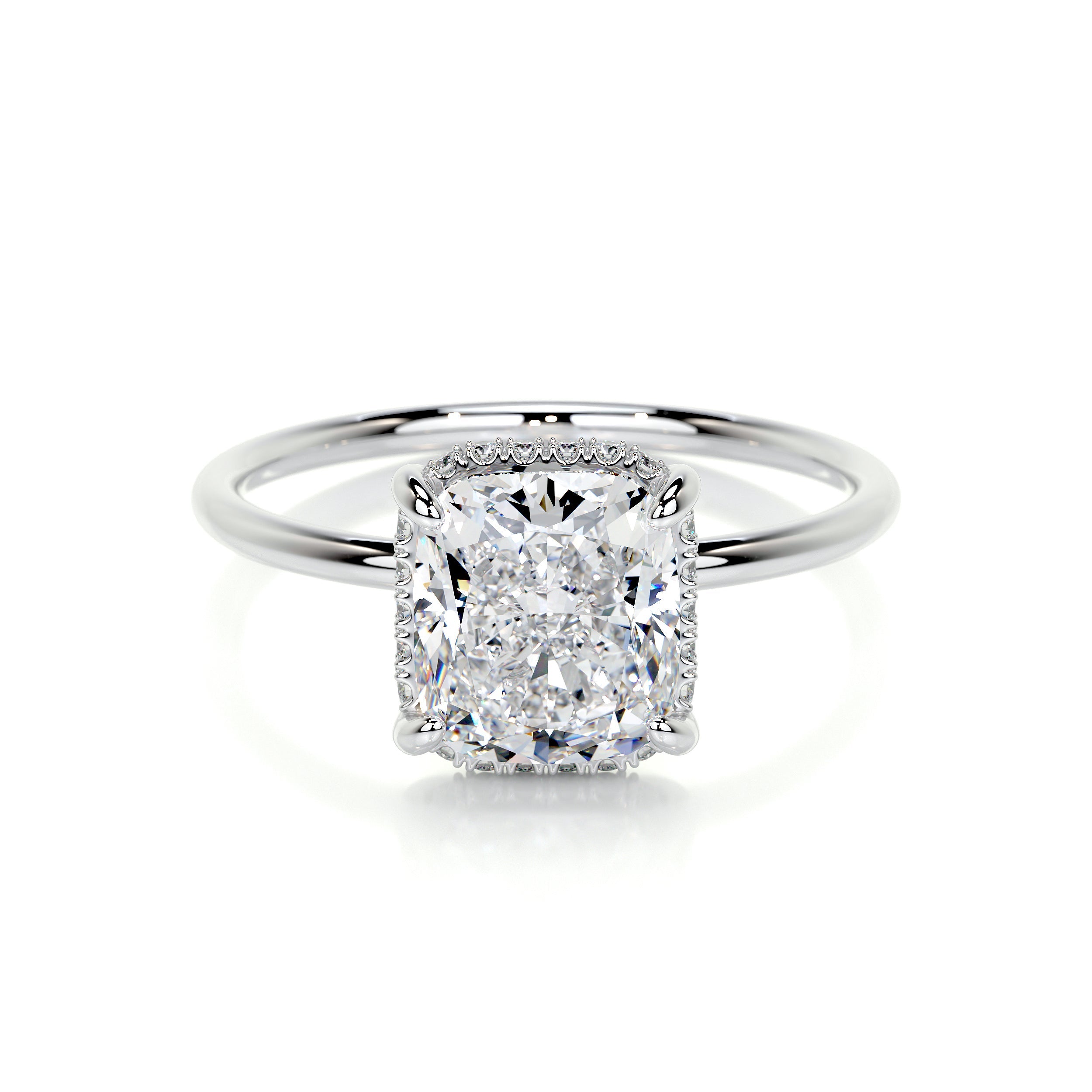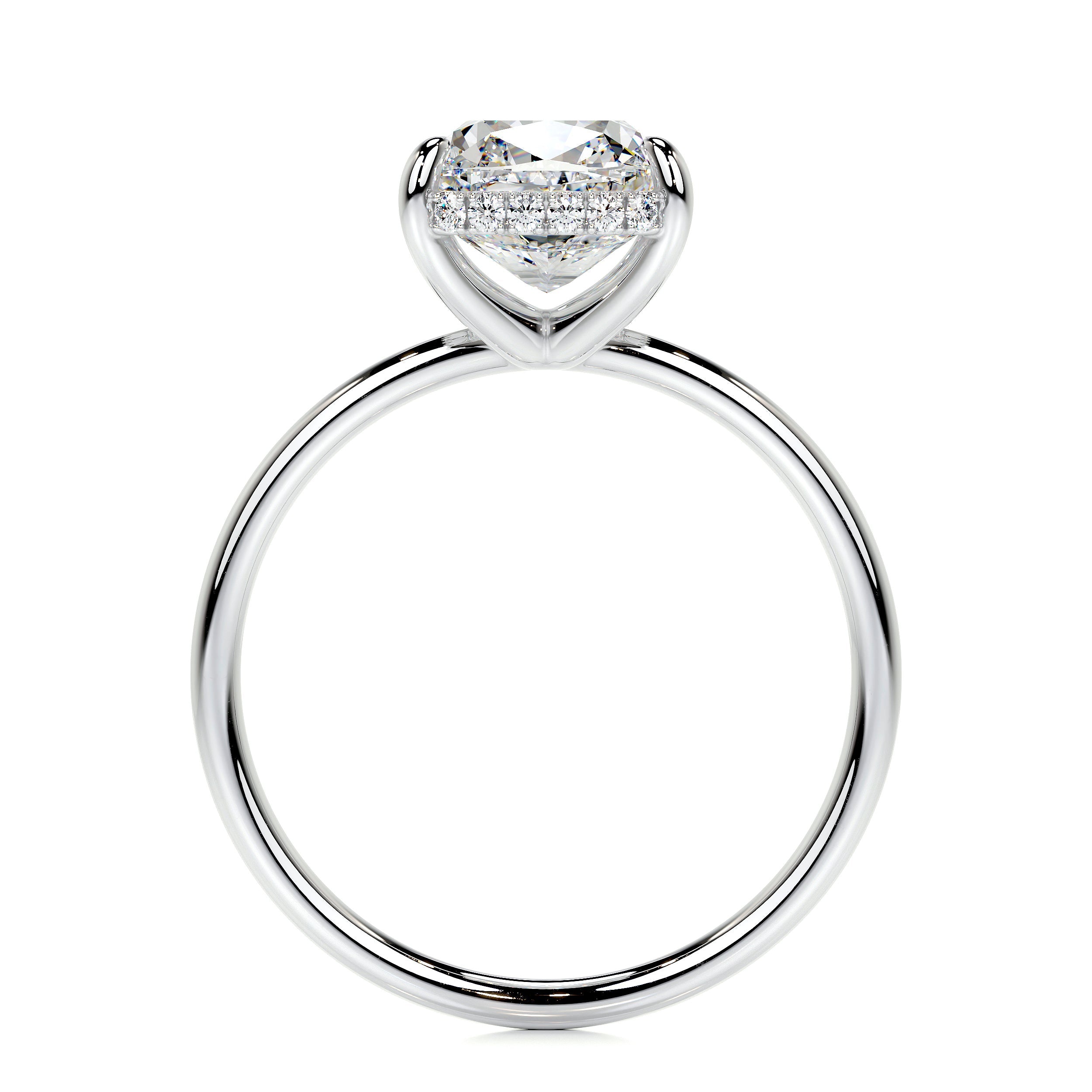Diamonds are such an important investment today because they are highly valuable. And many diamond lookalikes are being offered on the market. Also diamonds represent a very emotional purchase for couples. An engagement ring, anniversary band, or wedding band represents commitment and love between two people. Every time a woman looks at her ring, she’s reminded of her cherished love story.
So it’s vital that we get it right when buying a diamond. One of the questions that linger in a consumer’s mind is, "how do I know if my diamond is real?" This is a valid question, and one that has a definite answer. Let’s talk about several ways that you, the shopper can tell a real diamond from something that simply looks like a diamond.
Your love is real, and true and genuine, and your diamond should have those same attributes. Your ring is meant to be treasured for a lifetime.

Become a Diamond Detective
Let’s look at some ways to test a diamond for authenticity. You may be surprised by some tests, but they can all aid a consumer in making the separation between a real diamond and something else.
In the end, the best way to know with complete certainty if your diamond is real is to buy from a reputable jeweler, someone who’s built their reputation on trustworthiness. Most real diamonds come with a grading report that details vital characteristics about the stone and also verify its authenticity.
Can you tell simply by looking at a diamond if it is real? Well, the answer is yes, and no. Imitation diamonds are crafted to high standards today. So it’s a tough job to separate the real from the not so real. A visual inspection (unless you’re a professional with a loupe) will only give you indications. Yet, real diamonds display certain traits that separate them from fakes. While your eyes alone cannot provide absolute certainty, they can offer important initial clues. 
Examine Carefully
First of all, examine the diamond in question. If a diamond is real, you’ll certainly see a deep intense sparkle to the stone. Real diamonds reflect light in a particular way because of their high refractive index. Trades people point to the scintillation of a well cut diamond as being one of its main selling points. After all, a woman wants her diamond to be the most brilliant ring of anyone’s.
Modern Diamonds are Brilliant!
Today, diamonds are cut to produce unparalleled brilliance and dispersion. This is recognized by the way the stone scatters the bright white light that occurs when light hits the diamond. Professionals explain that the light entering a diamond bounces around all the facets inside the stone before returning to the eye. That’s the dazzling effect we love to see in a well cut modern diamond.
By contrast, some imitation stones like cubic zirconia or even glass may appear dull or less sparkly next to a real diamond. Other manmade stones even display excessive rainbow-like reflections, something a diamond does not do.
Inspect the Details
Take a look at the way the facets are joined on the stone. Real diamonds will always have sharp facet edges (called facet junctions). Under careful examination, diamond facets (57 or 58 on a round brilliant cut) and its angles should appear straight, crisp and well-defined, with facet junctions perfectly aligning everywhere.
Here’s something perfectly natural, and you may be able to see this with an unaided eye. Genuine diamonds often contain tiny natural imperfections, flaws if you will. In the trade these naturally occurring blemishes are called inclusions. They were formed during the diamond's creation, these are actually indicators of authenticity.
Here are a few additional ways to determine if specific jewelry pieces contain real diamonds.
Looking at Diamond Rings
Are there clues that you discover if the diamond is already in a setting, perhaps? If the diamond is already set, pay close attention to the quality of its setting. Genuine diamonds are most often mounted in high-quality platinum or gold. Unless they are very old antiques they will be marked with hallmark stamps like 14K, 18K, for US goods, and 585, 750, 900, 950 for European rings, or even PT for platinum. Low-quality settings of base metal, even if it’s plated with gold, or jewelry with poor craftsmanship tip you off that the stone is probably not a real diamond.
Best At-Home Tests to see if a Diamond is Real
The following methods are not foolproof of course. So we always recommend checking with your jeweler for his/her final assessment. But here are some simple in-home options that offer a general idea as to your diamond’s authenticity.
Flashlight Test
Observe how the diamond behaves under a flashlight. When shining a flashlight directly at the diamond, it should reflect white light brilliantly. But an imitation stone may not reflect as dramatically or even at all.
The Water Test
This is a fun experiment. Fill a glass with water, then carefully insert the loose stone. A real diamond, which is denser than most imitations, sinks straight to the bottom. If a stone floats or stays suspended in the water, it's probably not a real diamond just a lookalike.
Black Light (UV Light) Test
Many diamonds display natural fluorescence under the right conditions. When exposed to UV (ultraviolet light) some diamonds glow. While not definitive, a UV light test is one step closer to finding the authenticity of diamonds that naturally fluoresce. Keep in mind, lack of fluorescence doesn't rule out a stone’s authenticity. Some real diamonds don't fluoresce.
Real diamonds display specific characteristics separating them from imitations. While your eyes alone cannot provide absolute certainty, they can offer important initial clues.

Best Professional Inspections for a Diamond
While at-home tests can provide helpful insight, the most reliable way to determine if a diamond is real is through professional testing and official certification.
Magnifying Lens (Loupe) Test
All professional jewelers examine a diamond using a professional-grade jewelers loupe with 10x magnification. They check for inclusions and imperfections, which are commonplace in nearly all natural diamonds. They also assess other traits of the stone to prove its authenticity.
Utilizing Professional Tools
Jewelers use professional tools including a diamond tester which displays thermal conductivity to differentiate a real diamond from other materials. Diamonds disperse heat differently from other stones. A diamond tester is very sensitive to how a stone conducts heat and it will provide a reliable diagnosis.
Diamond Laboratory Report
If you obtain a diamond report from a reputable laboratory, you can be assured that it is most authoritative way to verify a diamond's authenticity. A diamond certificate from a reputable gemological lab like GIA (Gemological Institute of America) or other respected labs will prove the stone’s certainty. The certificates detail specific data that show specific diamond traits and authenticity.
Knowing that your diamond is real adds a layer of confidence to your purchase and enhances your appreciation of the stone. A diamond is something to treasure for a lifetime and your joy in knowing it’s a genuine diamond will increase year after year.
FAQs
Can you tell if a diamond is real just by looking at it?
The truth is you may not always be able to tell if a diamond is real just by looking at it. But there are several tips to determine if it’s likely to be real, or a fake.
Is there any way to absolutely tell if a diamond is real for certain?
Several home tests can start the process for identifying the diamond. From there you’ll be able to get further information from the jeweler if needed.
What tools do jewelers use for identification of a diamond?
First of all, the jeweler looks through a 10X loupe. He or she may also use a microscope, a refractometer, a UV light and other instruments to verify the diamond.
Are flaws inside the stone a sign that it’s not a real diamond?
No, actually internally blemishes, called inclusions are one way the jeweler determines if the diamond is natural.
Are cheap settings a sign that the diamond is not real?
Not always, but a cheap setting in base metal (even if it’s plated in gold) and shoddy workmanship may show you that the diamond is fake, but check to be sure.
What is the purpose of a diamond certificate?
A diamond certificate or laboratory report is a vital part of the diamond’s proof of authenticity. The lab will independently inspect the stone and determine if it passes the tests for an authentic diamond. It also explains the details of ach of the 4C’s in establishing the proof of its authenticity.
